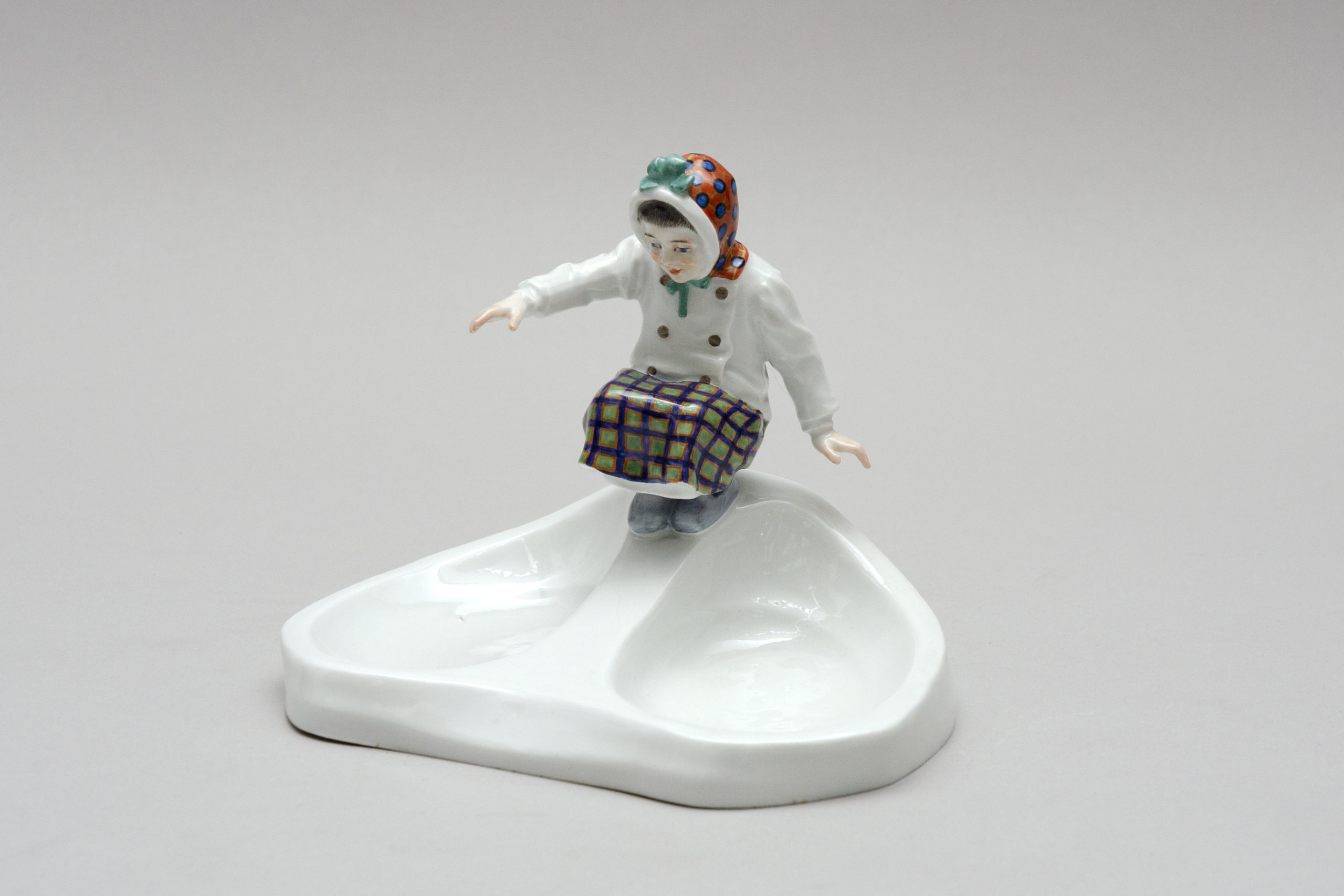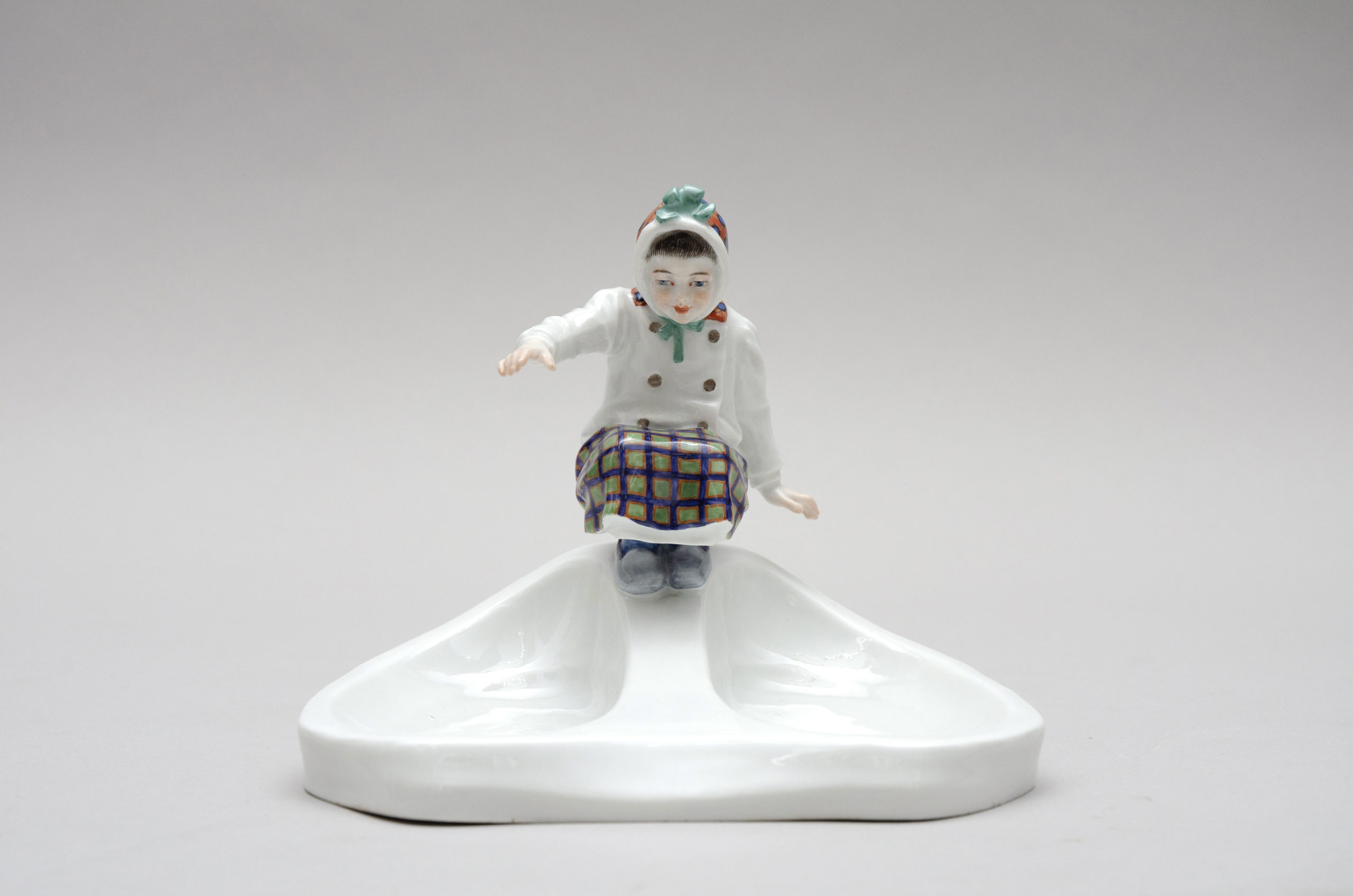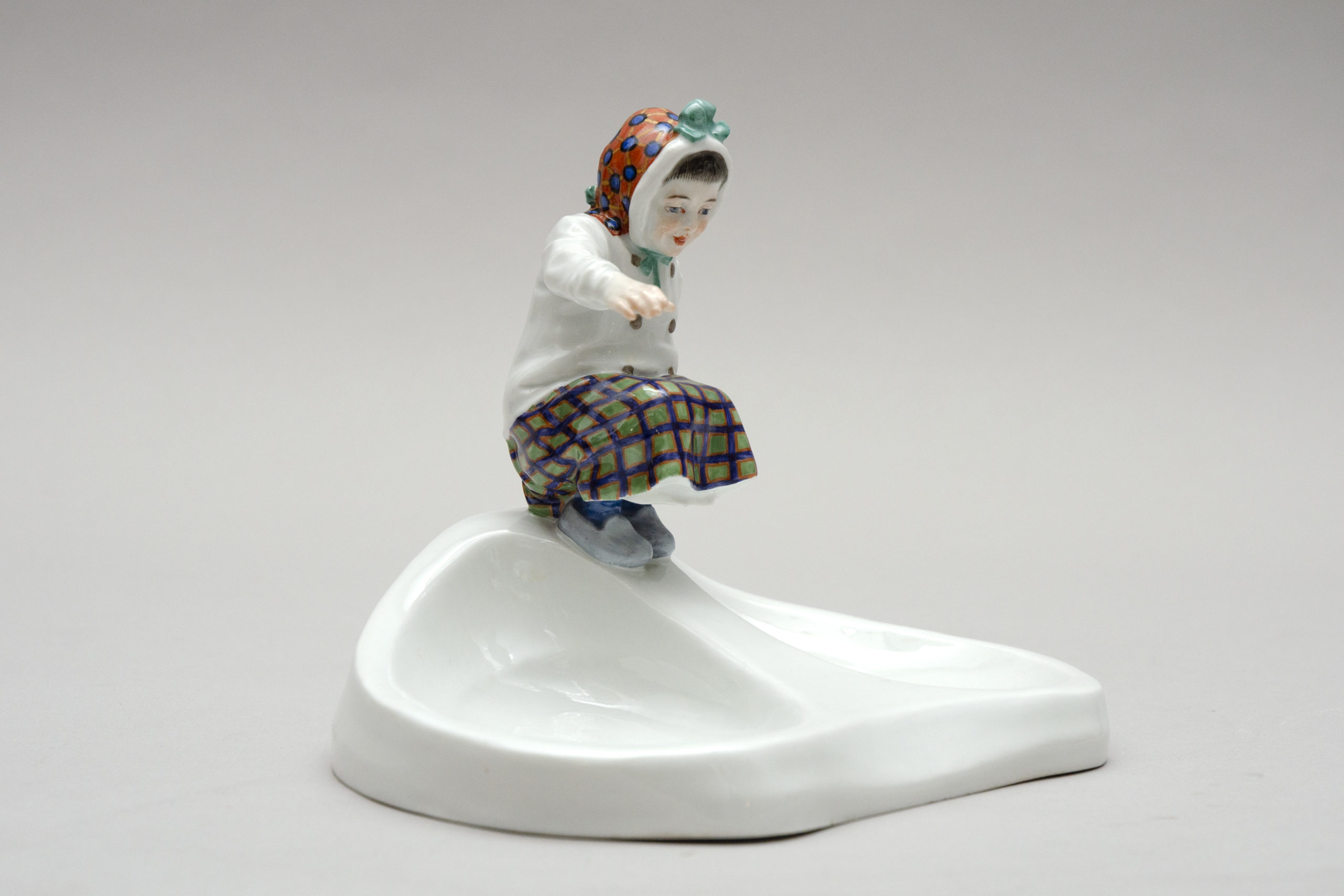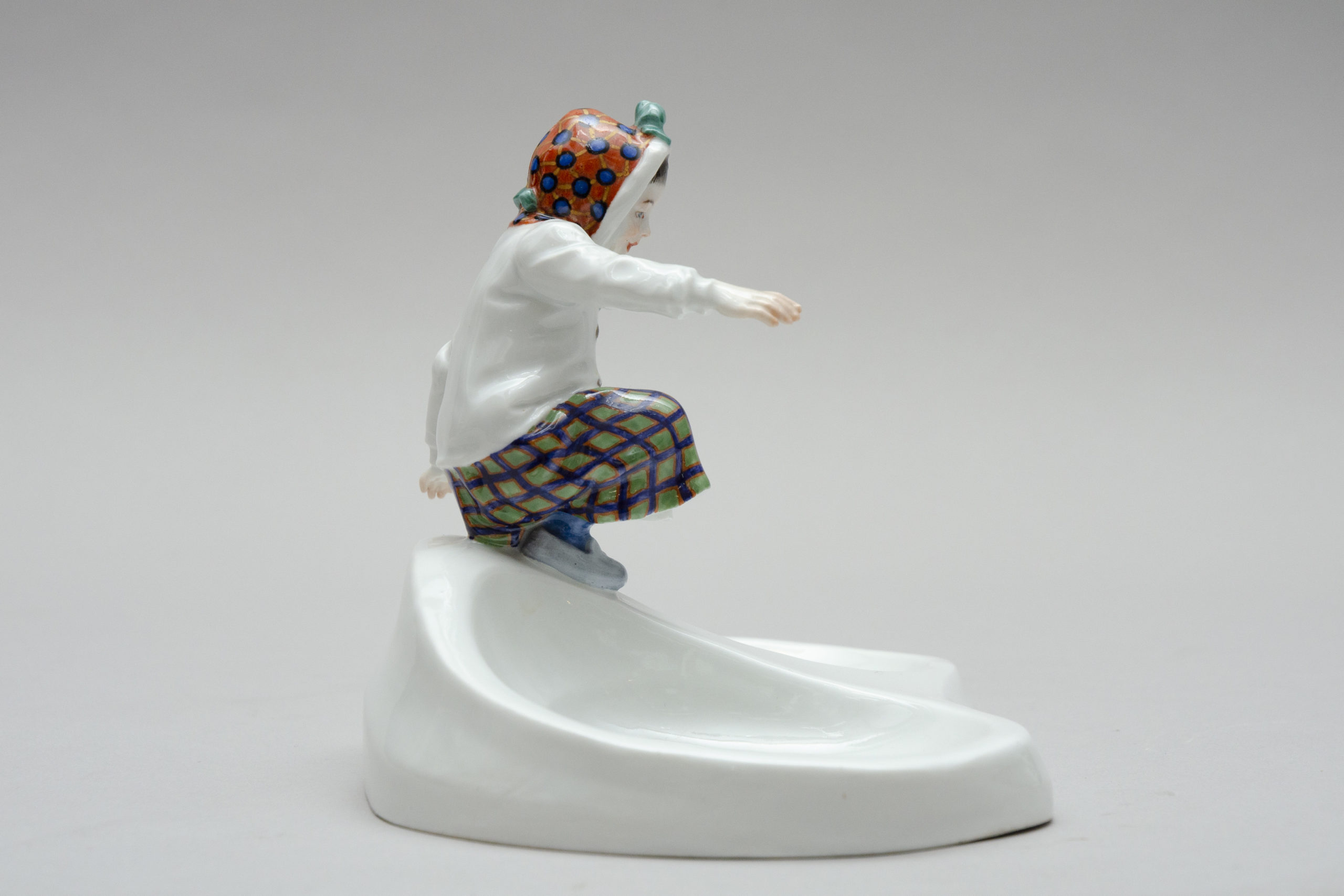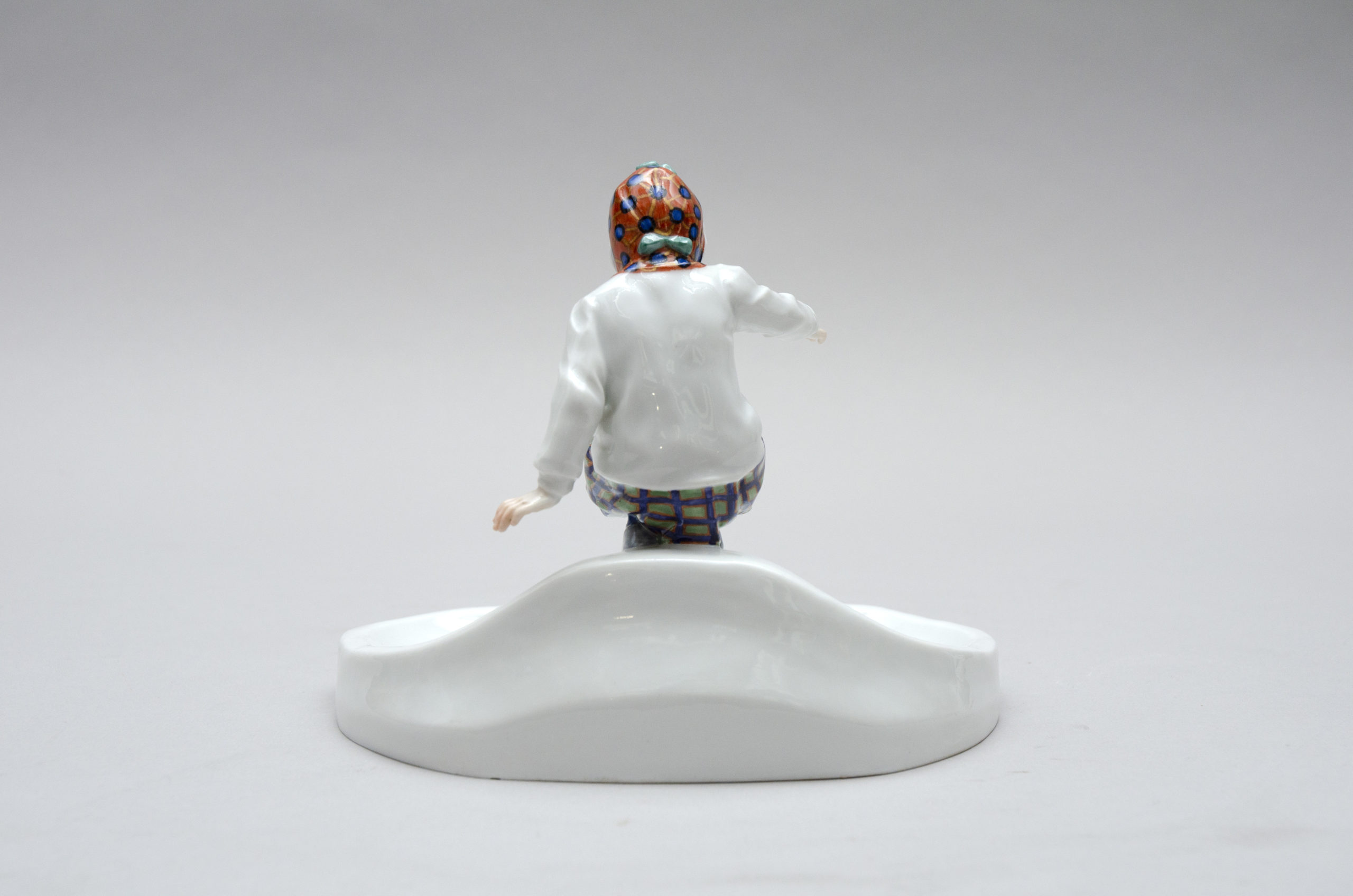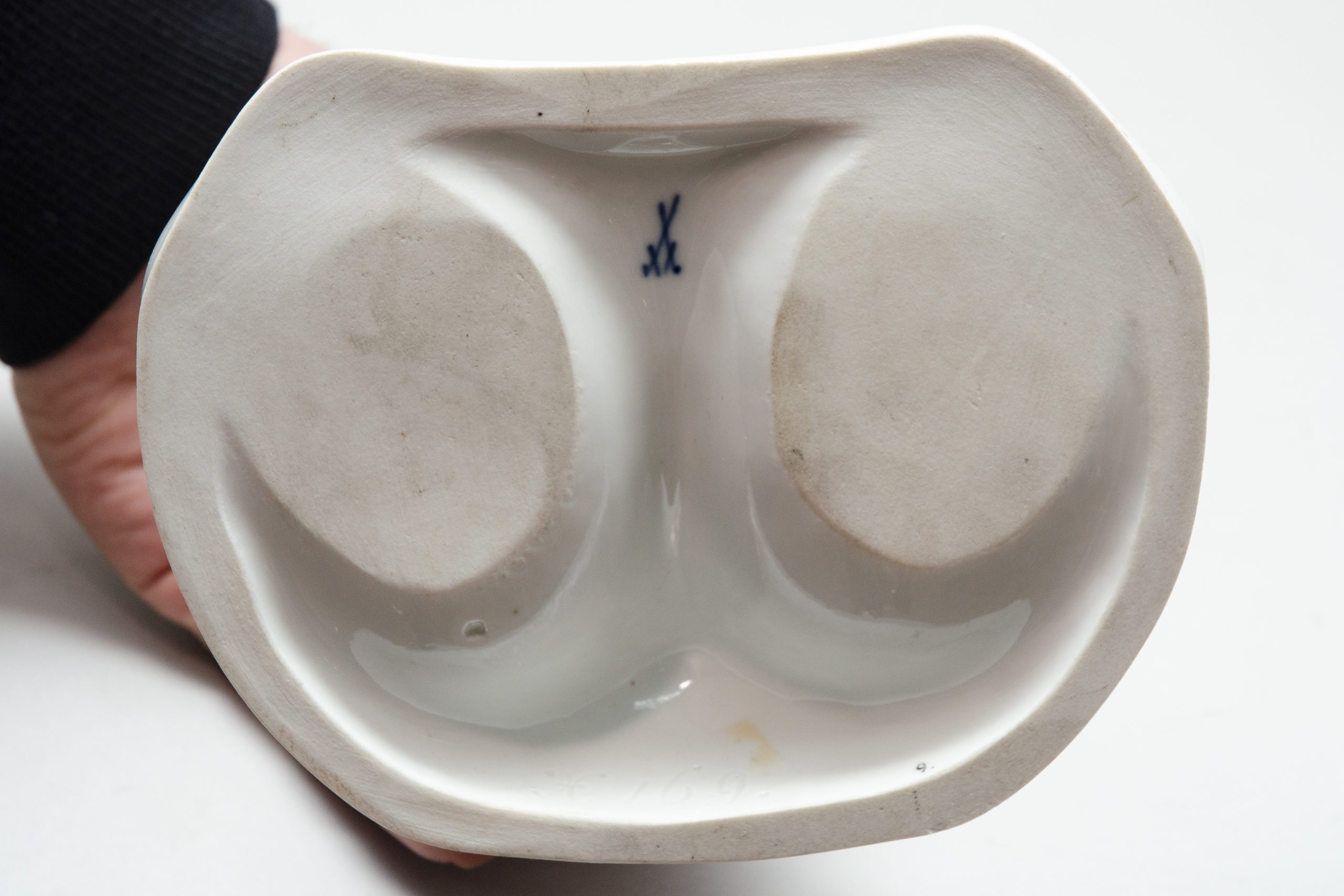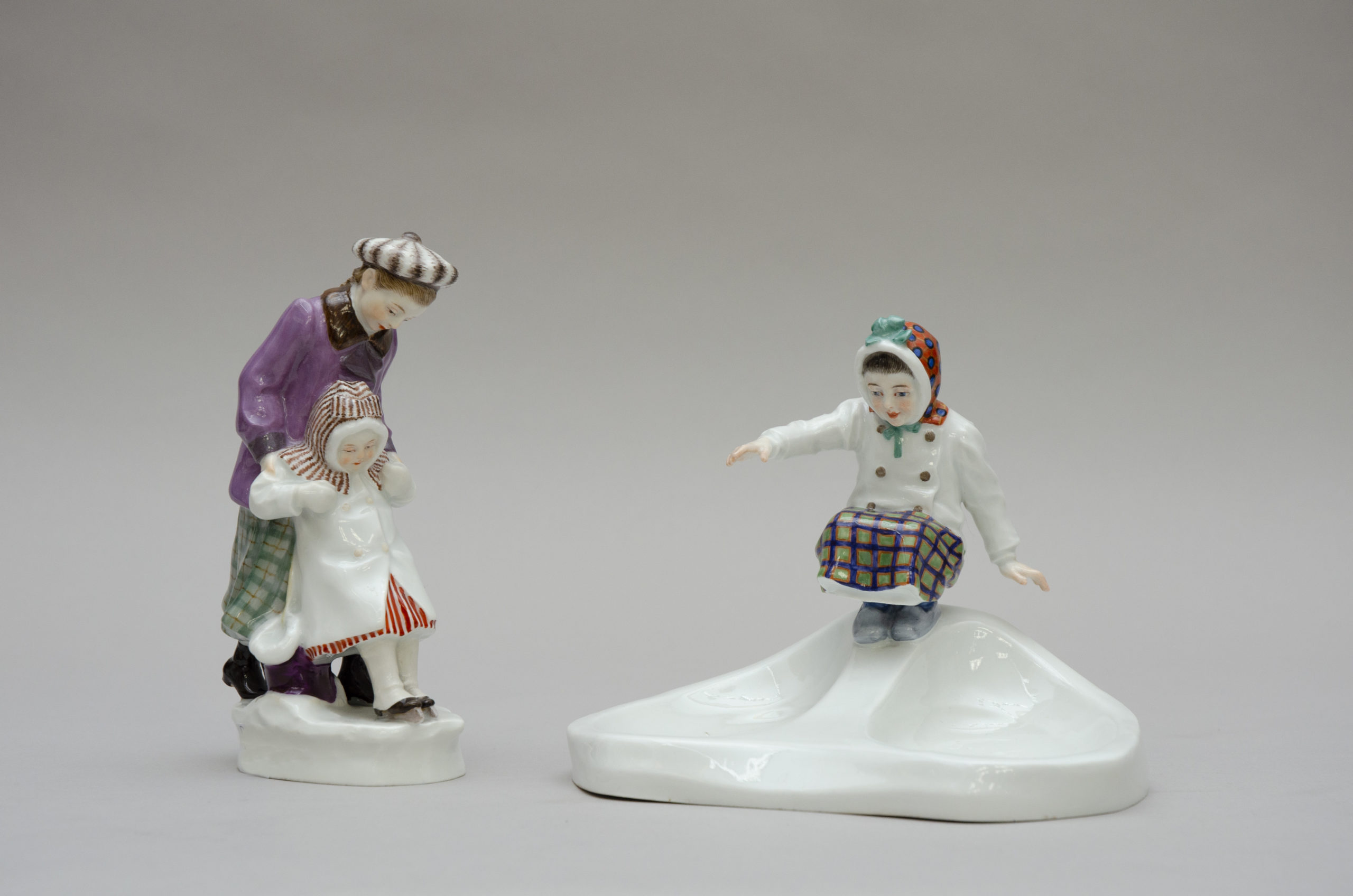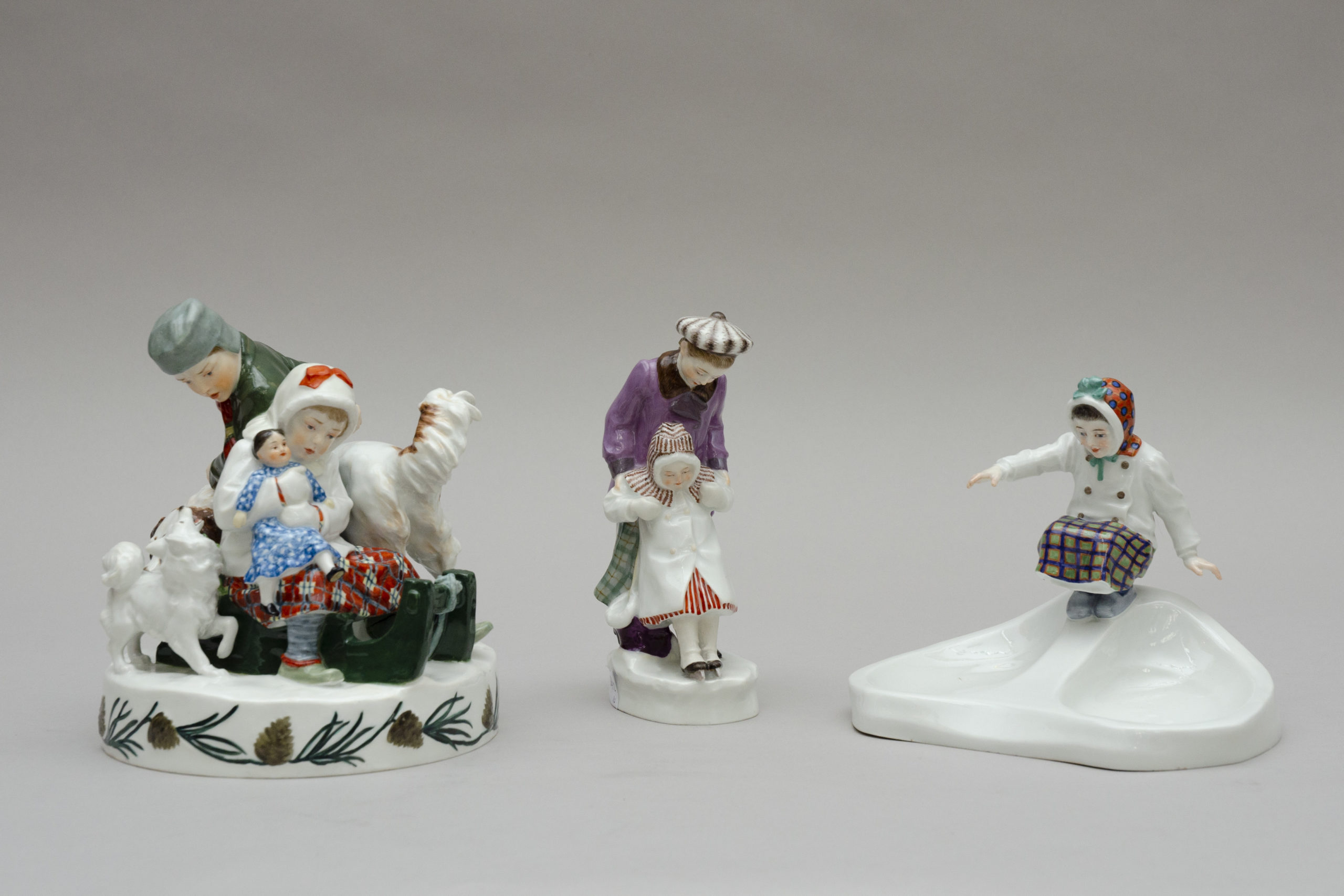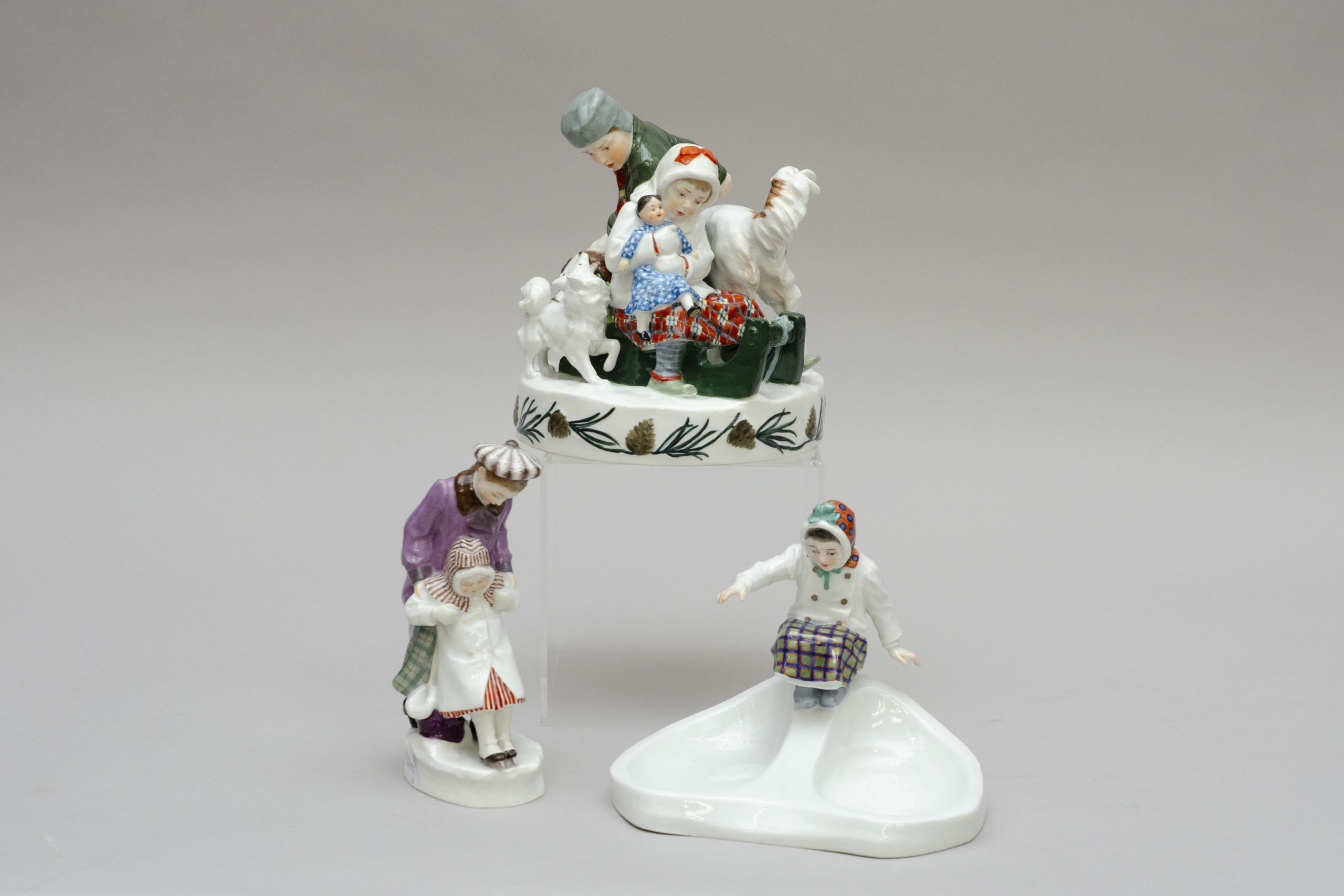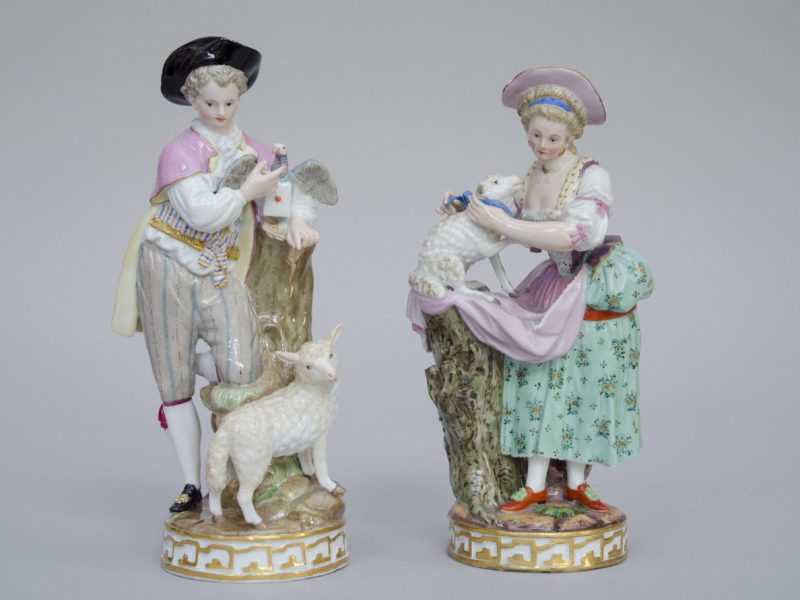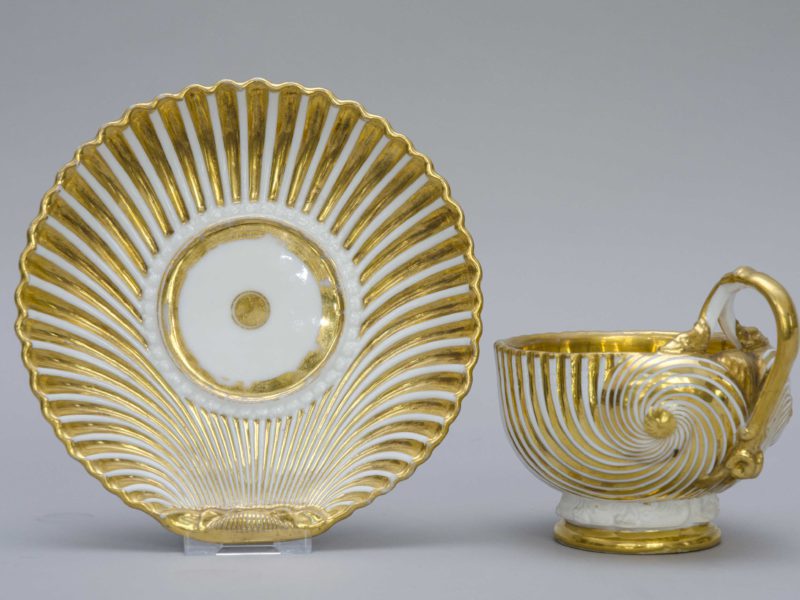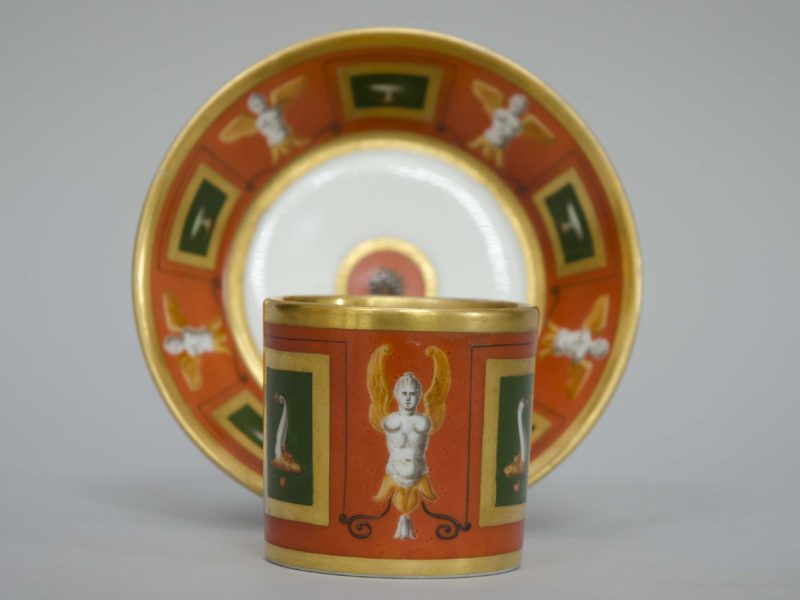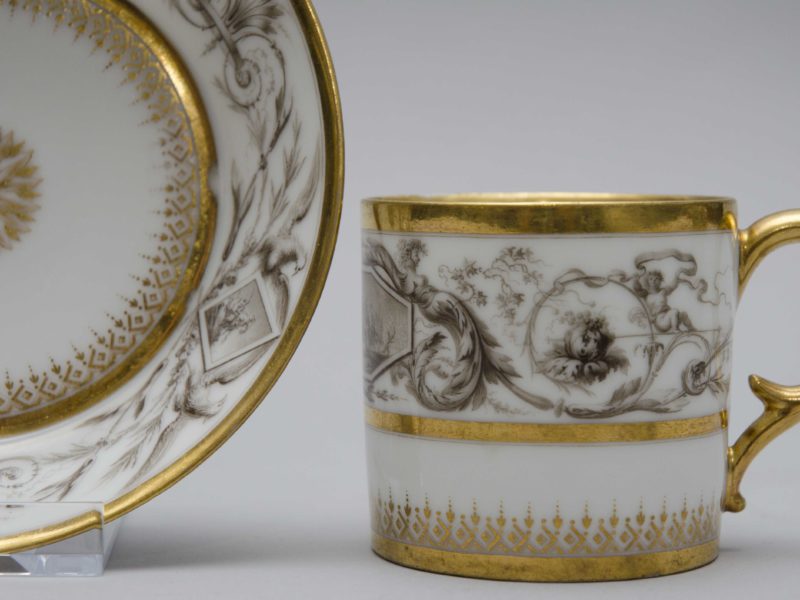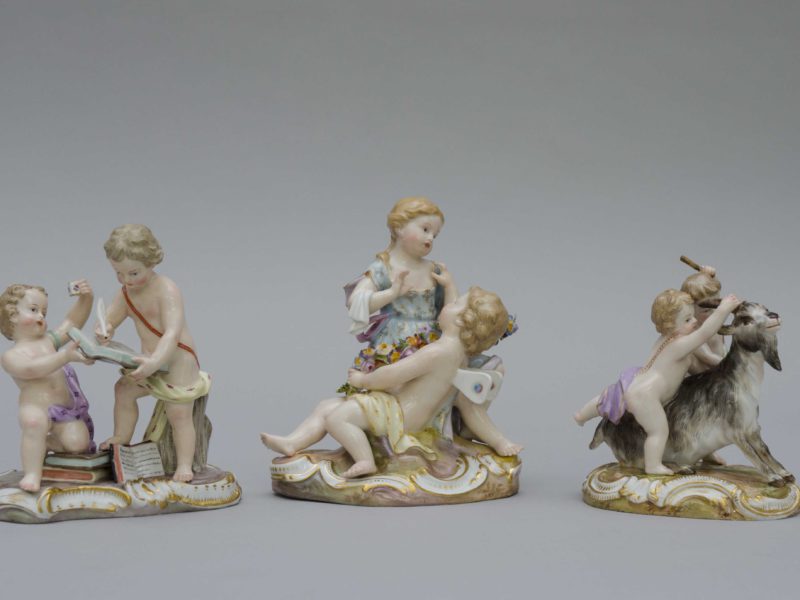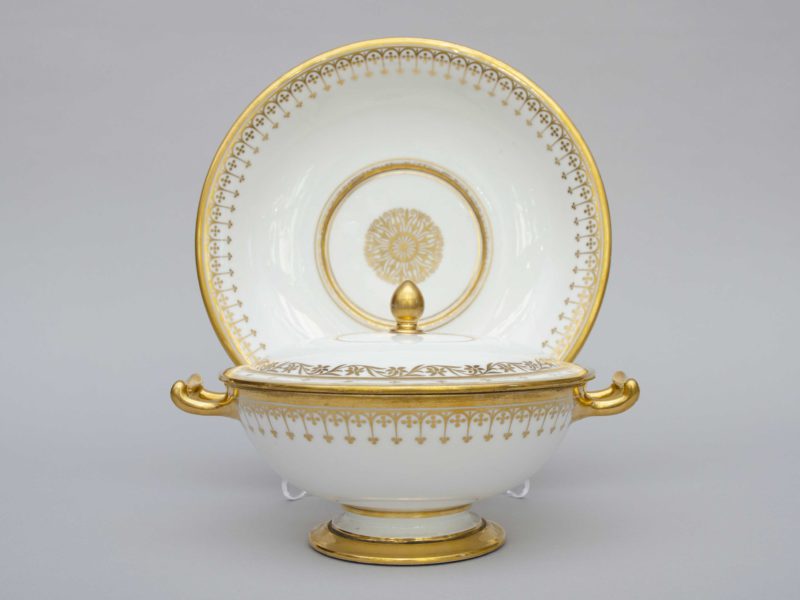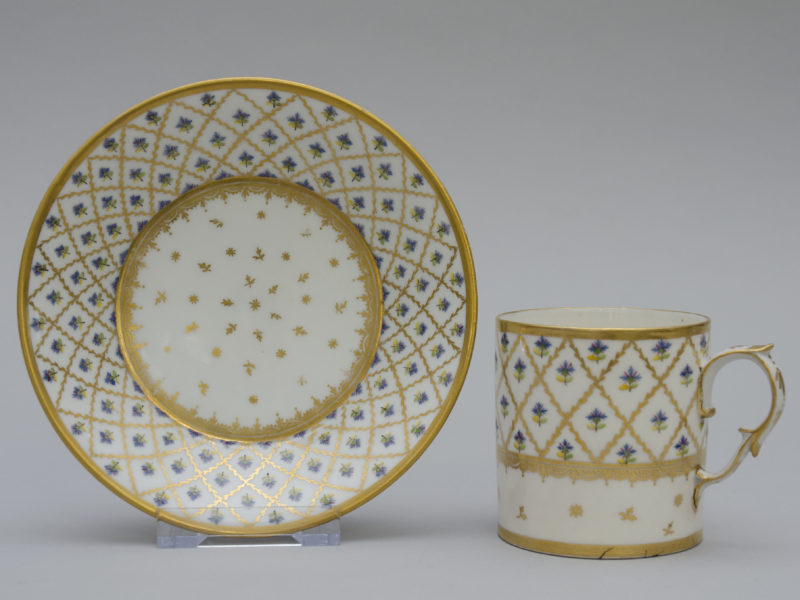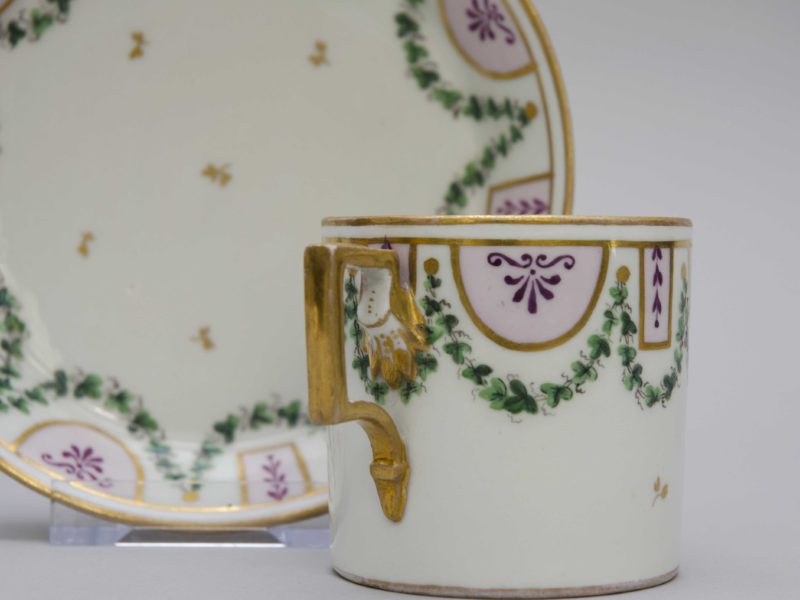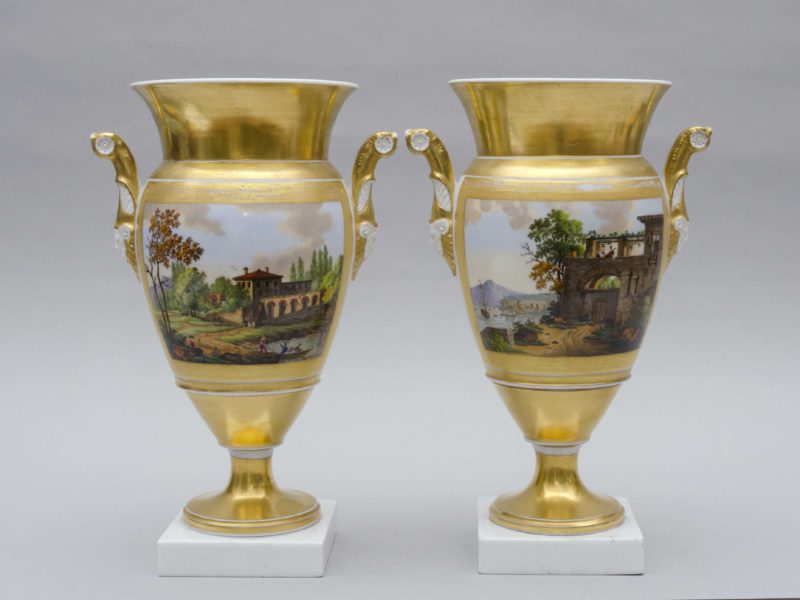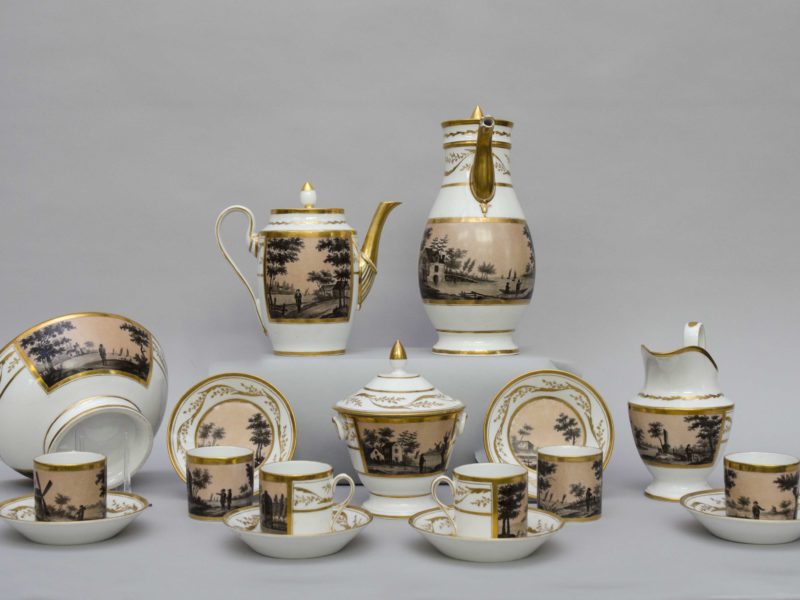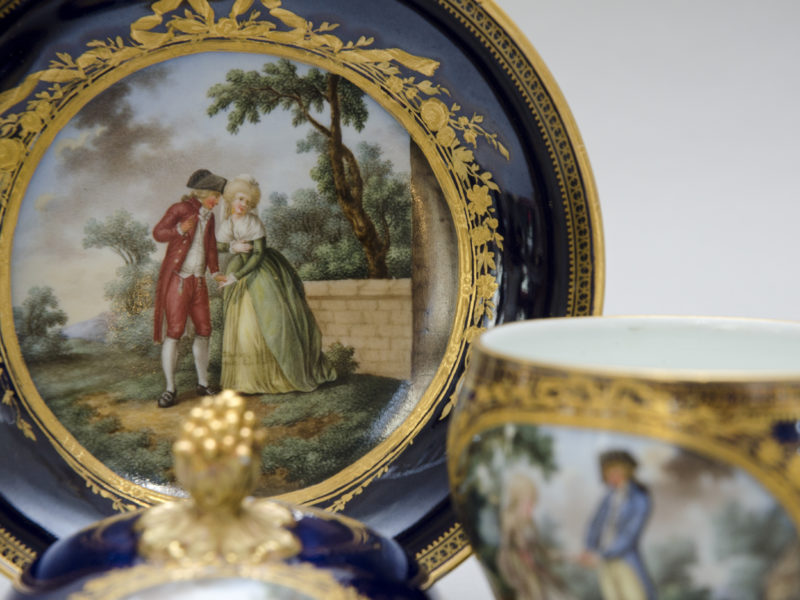
“Girl sliding from a bowl” Alfred König for Meissen
Price on request
In stock
Contact usLovely bowl with an adorable young girl sliding in the middle. She is winterly dressed in a charming bonnet and fashionable patterns. The bowl is divided in two round shaped parts, left in white. Marked on the bottom. A rare piece by the talented Alfred König. He made several models in the winter and sliding theme.
Size: H 14 cm x W 16 cm x D 11 cm
Meissen during the Jugendstil period. Modelled in 1905-1910.
Lit: Alfred König (Rudolstadt 1871- Meissen 1940) was a modeler at the Meissen manufactory from 1897, he studied at the Dresden Academy from 1913. He created numerous figures and groups of children, sportsmen, soldiers, Japanese and more. He retired in 1932.
Lit: Meissen was founded in 1710 in the gothic Albrechtburg castle. It was the first porcelain manufacturer in Europe. The previous year, in German Dresden, the alchemist Johann Friedrich Böttger, “goldmaker” and prisoner of Augustus the Strong (Elector of Saxony and king of Poland) had made the discovery. Initially the factory made fine red Böttger stoneware, with relief and engraved designs. The first true porcelain, put on the market in 1713, was similar in style, in the form of teaware, statuettes and Chinese style figures. From 1720, the porcelain became brilliant white, the enamel colours were improved, the designs were fantastic “chinoiseries”; it was the era of the painter-decorators with J. G. Höroldt as a leader. In the 1730s under the Count Brühl’s directorship (until 1752), the sculptors, with J.J. Käendler at their head, became dominant, producing a range of characters, animals and birds, dinner services richly decorated in relief, and sculptural vases and tableware. From 1756-1773 meissen porcelain was marked with the crossed swords with a dot in between the handles, known as the “dot-period”. This period marked the transition towards the neo-classical style. In 1774 Count Camillo Marcolini became director, he held this position until 1814. The more restrained neoclassical style dominated but the manufactory declined due to economic pressures and the international competition of the French factory Sèvres. In the early 19th century, technical innovations were introduced, and the wares were made in the popular taste which improved the situation again. In 1830 the name of the factory was changed from Königliche Manufaktur to Staatliche Porzellan Manufaktur. Superb modelling and painting were characteristic of Meissen porcelain, and for the next 50 years its products were unsurpassed, widely exported and much imitated. Throughout the 19thC, Meissen quality remained unchanged and there were few innovations, although the late 1890s and early 1900s saw the start of a more inventive approach in the Art Nouveau manner. The Meissen factory is still operational today.
In stock
Contact us